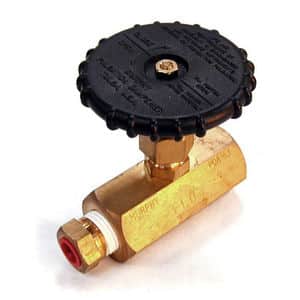What Is Pulsation Dampener?
Pulsation dampeners are an important topic as they play a key role in piping systems and fluid control, and are essential to ensure system stability, reliability, and safety.
Brief overview of pulsation dampeners
A pulsation dampener is a device used to control fluid pulsations in piping systems. It effectively reduces pressure pulsations and vibrations in piping systems by absorbing and smoothing the pulsating pressure in the fluid. The main function of a pulsation dampener is to protect piping and related equipment from damage and failure due to pressure fluctuations caused by pulsations. It improves the stability and reliability of piping systems and reduces maintenance costs while improving the safety of the working environment.
Pulsation dampeners working principle
Pulsation dampeners work by regulating and smoothing fluid pulsations using special structures and materials within them, as well as control devices. Specifically, a pulsation dampener typically contains a gas or liquid chamber that separates the fluid, and a compressible or removable damping medium, such as a gas, liquid, or spring. As the fluid passes through the piping system, pressure pulsations and vibrations are generated, and these pressure pulsations are propagated into the pulsation dampener.
The damping medium inside the pulsation dampener absorbs and stores the energy of the fluid pulsations and gradually releases it, thereby smoothing the fluid pressure and flow. This energy absorption and release process makes the fluid pressure changes in the piping system smoother and reduces the amplitude of pressure pulsations and vibrations. At the same time, the pulsation dampener can further regulate and control the fluid pulsation by adjusting its internal pressure control device to ensure the stable operation of the piping system.
Main components of a pulsation dampener
- Vessel: A pulsation dampener typically consists of a vessel or shell to contain the dampening medium and fluid. This vessel is usually made of pressure-resistant material to withstand the pressure of the fluid in the piping system.
- Damping media: The damping media is the core component inside the pulsation dampener that absorbs and stores the energy of the fluid pulsations. Common damping media include gases, liquids, or springs. The gas or liquid in the gas and liquid chambers can be compressed or extruded as the fluid pulsates, thus smoothing the fluid pressure and flow.
- Compartmentalization: Compartmentalization is used to separate the fluid from the damping medium, preventing direct contact or mixing of the damping medium with the fluid. This ensures the effectiveness and stability of the dampening medium and the purity of the fluid.
- Pressure controls: Some advanced pulsation dampeners may be equipped with pressure controls to regulate the pressure or volume of the damping medium for precise control and regulation of fluid pulsation.
- Connectors: Connectors are used to link the pulsation dampener to the piping system to ensure smooth fluid flow and secure installation of the damper.
Types of pulsation dampeners
| Type | Description | Application Scene |
| Hydraulic pulsation dampeners | Reduce fluid pulsation in pipeline systems using fluid damping effect. | Industrial pipelines, water treatment systems, HVAC systems, etc. |
| Pneumatic pulsation dampeners | Reduce fluid pulsation in pipeline systems using gas damping effect. | Air compressors, pneumatic tools, hydraulic systems, etc. |
| Mechanical pulsation dampeners | Reduce fluid pulsation in pipeline systems using mechanical damping effect. | Engine systems, hydraulic cylinders, pump stations, etc. |
| Electronic pulsation dampeners | Monitor and regulate fluid pulsation in pipeline systems using electronic control systems. | Laboratory equipment, medical devices, automated production lines, etc. |
| Expansion pulsation dampeners | Mitigate fluid pulsation in pipeline systems by volume changes. | Oil pipelines, petrochemical plants, water supply systems, etc. |
| Diaphragm pulsation dampeners | Separate fluid and gas chambers using flexible diaphragms to reduce fluid pulsation. | Pump stations, chemical processes, water pump delivery systems, etc. |
| Piston pulsation dampeners | Absorb or release fluid pulsation in pipeline systems through piston movement. | Automotive engines, hydraulic systems, aerospace equipment, etc. |
| Rotary pulsation dampeners | Reduce fluid pulsation in pipeline systems using rotational mechanisms. | Wind turbines, axial flow pumps, fans, etc. |
| Helical pulsation dampeners | Mitigate fluid pulsation in pipeline systems using helical structures. | Cooling water circulation systems, chemical production, food processing, etc. |



The role of pulsation dampeners
- Reducing fluid pulsation: Fluid pulsation in piping systems is due to the periodic pressure fluctuations that occur as fluid flows through the piping. This pulsation can cause pressure and vibration in piping systems, which can cause damage to equipment and piping structures, and even affect the work environment and operator safety. Pulsation dampeners effectively reduce pressure pulsations and vibrations in piping systems by absorbing and smoothing the energy of fluid pulsations, protecting piping and related equipment from damage.
- Reducing pressure and vibration in piping systems: Pulsation dampeners help smooth out fluid pressure and flow by reducing fluid pulsations in piping systems. This stabilization reduces pressure spikes and pressure variations in the piping system, lowering pressure and vibration levels in the piping system. By reducing pressure and vibration in the piping system, pulsation dampeners minimize wear and damage to equipment, extending the life of the equipment while reducing maintenance costs and frequency of repairs.

AOBL pulsation dampener utilizes advanced technology to effectively absorb fluid pulsations in piping systems, reduce pressure and vibration, and protect equipment from damage. Choose AOBL to make your piping system more stable and reliable!
Installation and maintenance of pulsation dampeners
Installation:
- Choosing the right location: Choose a suitable location in the piping system to install the pulsation dampener, usually in the pipeline turn, near the valve or in the area of frequent fluid oscillation.
- Correct installation direction: Ensure that the pulsation dampener is installed in the same direction as the direction of fluid flow to ensure its proper operation.
- Piping support: In the vicinity of the pulsation dampener installation location, ensure that the piping system support structure is stable and reliable, to avoid additional vibration and displacement of the pipeline.
- Connections: Connect the pulsation dampener to the piping system using suitable connectors to ensure the connections are secure and sealed to prevent leakage.
- Pressure relief: During installation, ensure that the pressure inside the pulsation dampener can be released freely to avoid additional pressure build-up during operation.
Maintenance:
- Periodic inspection: Perform periodic inspections of the pulsation dampener to check that connections, seals and damping media are in good condition and are not damaged or deteriorated.
- Cleaning: Periodically clean the external surfaces of the pulsation dampener to ensure that they are in a clean condition and that dust or dirt does not interfere with their operation.
- Damping media check: Check and replace the damping media regularly to ensure proper operation and performance.
- Pressure monitoring: Regularly monitor the pulsation dampener’s operating pressure and flow rate to ensure proper operation and detect problems.
- Repair and replacement: If the pulsation dampener is found to have problems or damage, it should be repaired or replaced in time to avoid affecting the normal operation of the piping system.
Summary
Pulsation dampeners are critical components of piping systems whose role and value cannot be overlooked. By reducing fluid pulsation and lowering pressure and vibration in piping systems, pulsation dampeners protect piping and equipment from damage and improve system stability and reliability. Their installation and maintenance are critical to ensure proper operation and long-term stability. Therefore, an in-depth understanding of the working principle, installation and maintenance methods of pulsation dampeners, as well as their important role in piping systems, is of great significance to ensure the safe operation and long-term operation of piping systems.
AOBL is your trusted specialist in conveying fluids! Not only do we offer high-performance pulsation dampeners, but we also provide a full range of fluid transfer solutions. From pneumatic diaphragm pumps to electric diaphragm pumps to progressive cavity, chemical and centrifugal pumps, our product line covers a wide range of applications and needs. Whether you need reliable fluid transfer equipment or are looking to improve productivity and quality, AOBL has the best solution for you. We are committed to providing our customers with superior product quality, professional technical support and excellent customer service. Choose AOBL and let us be your fluid handling partner for business development and success!

